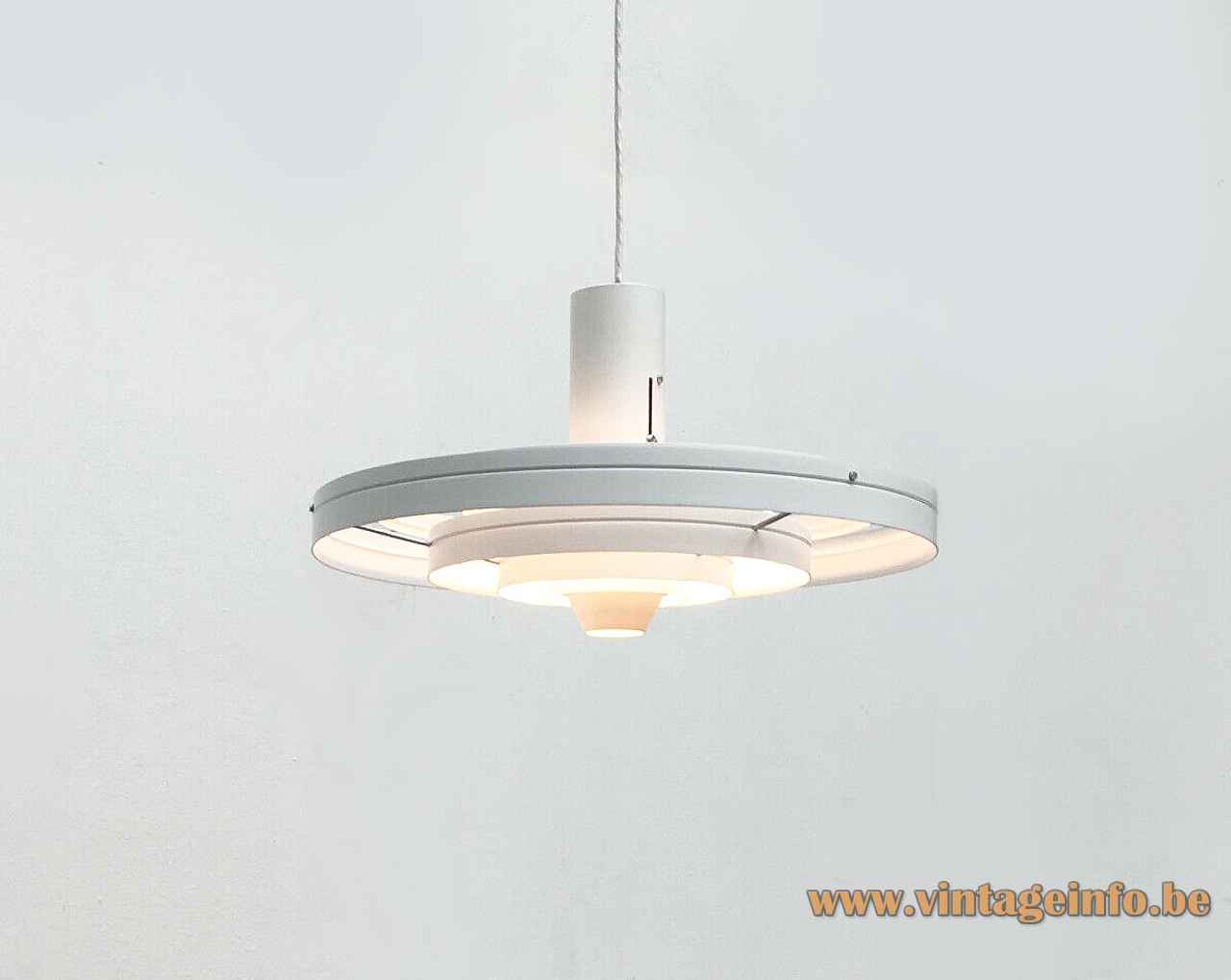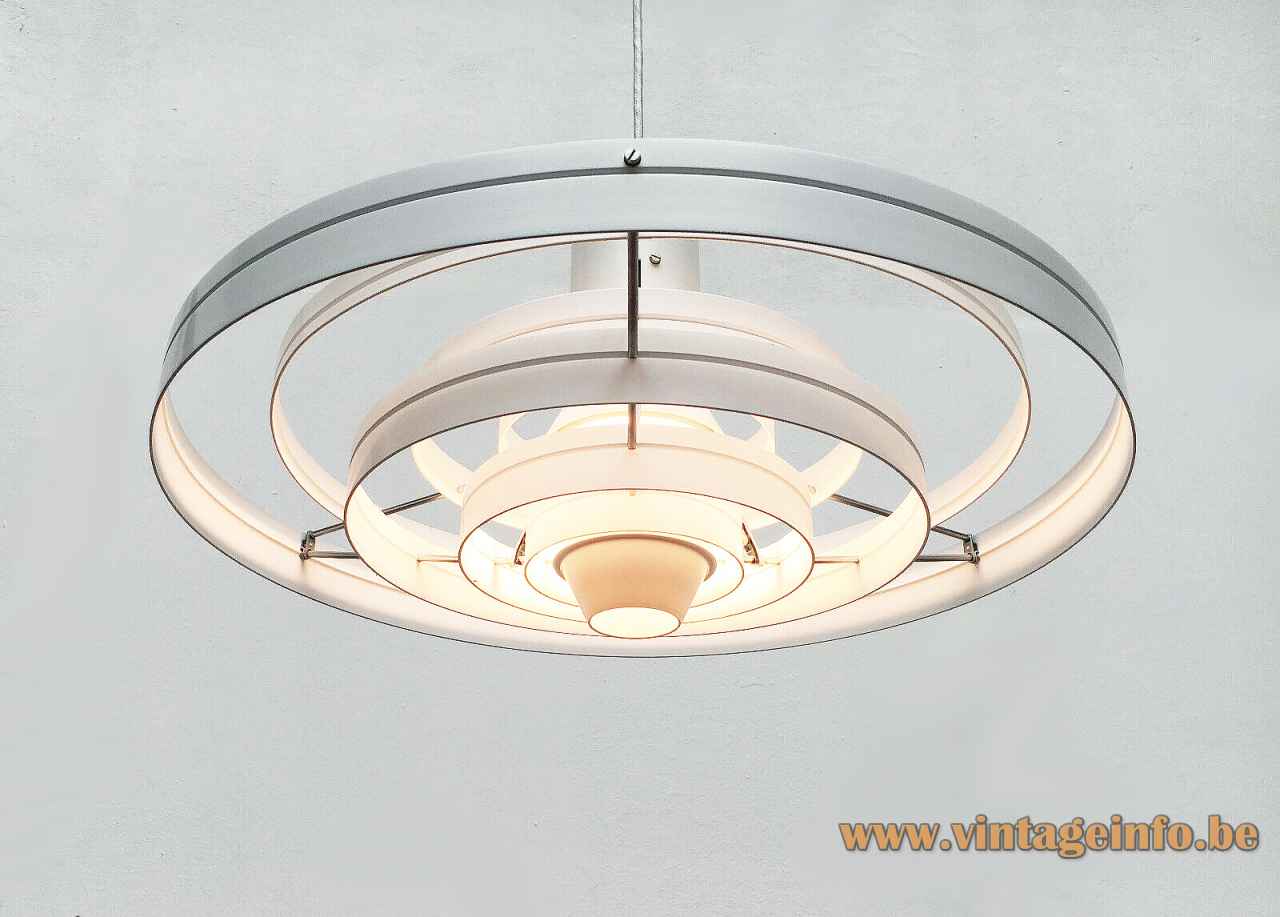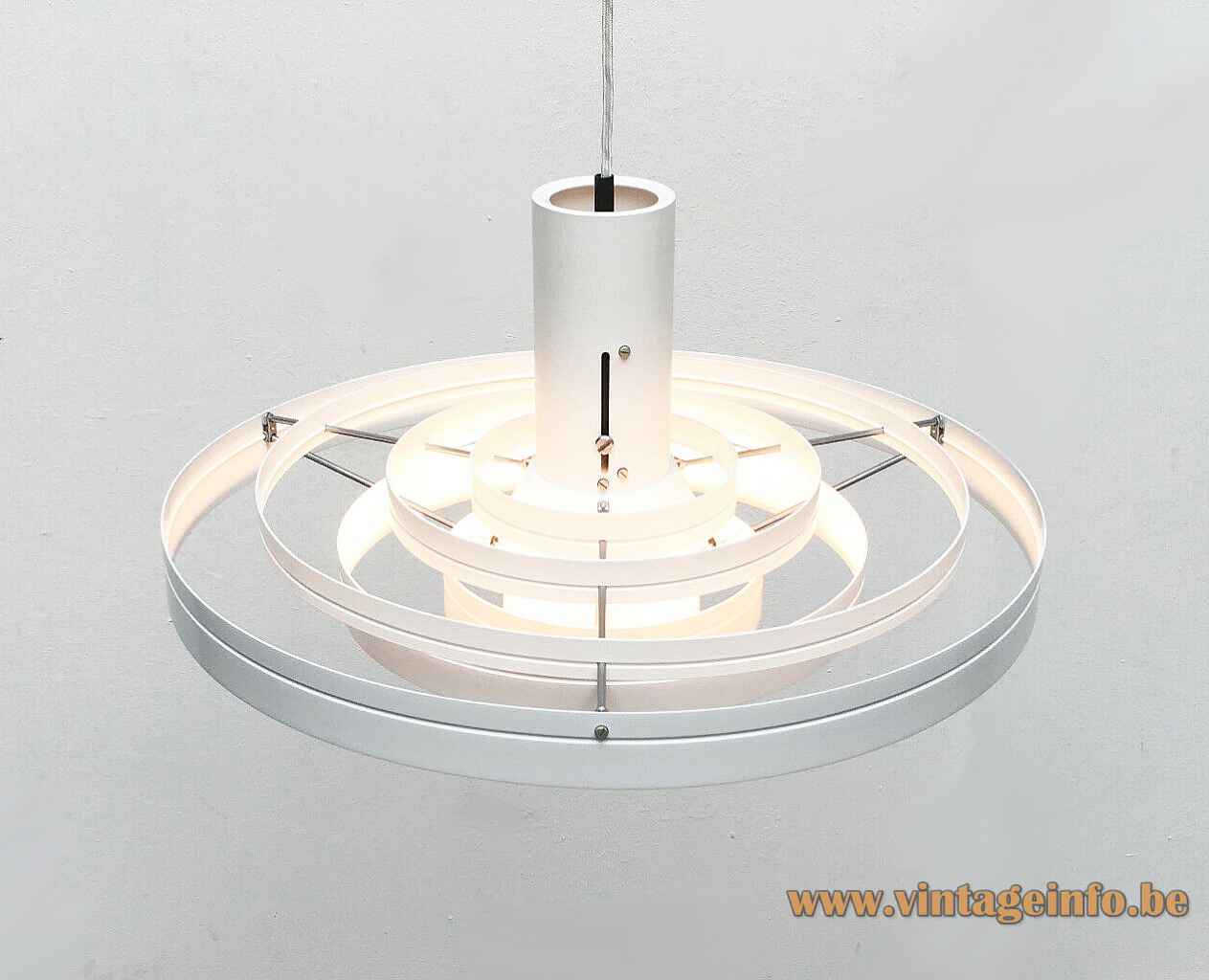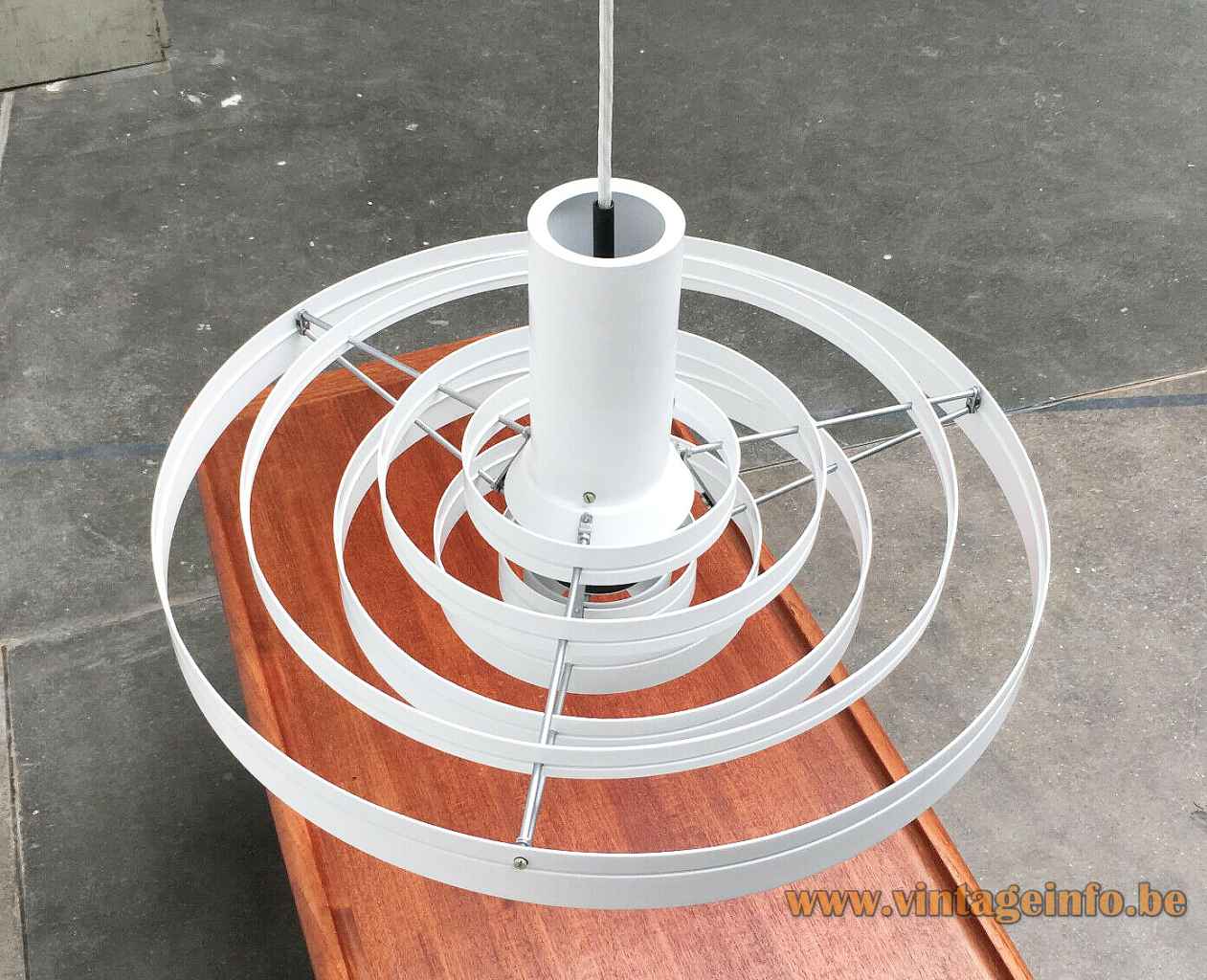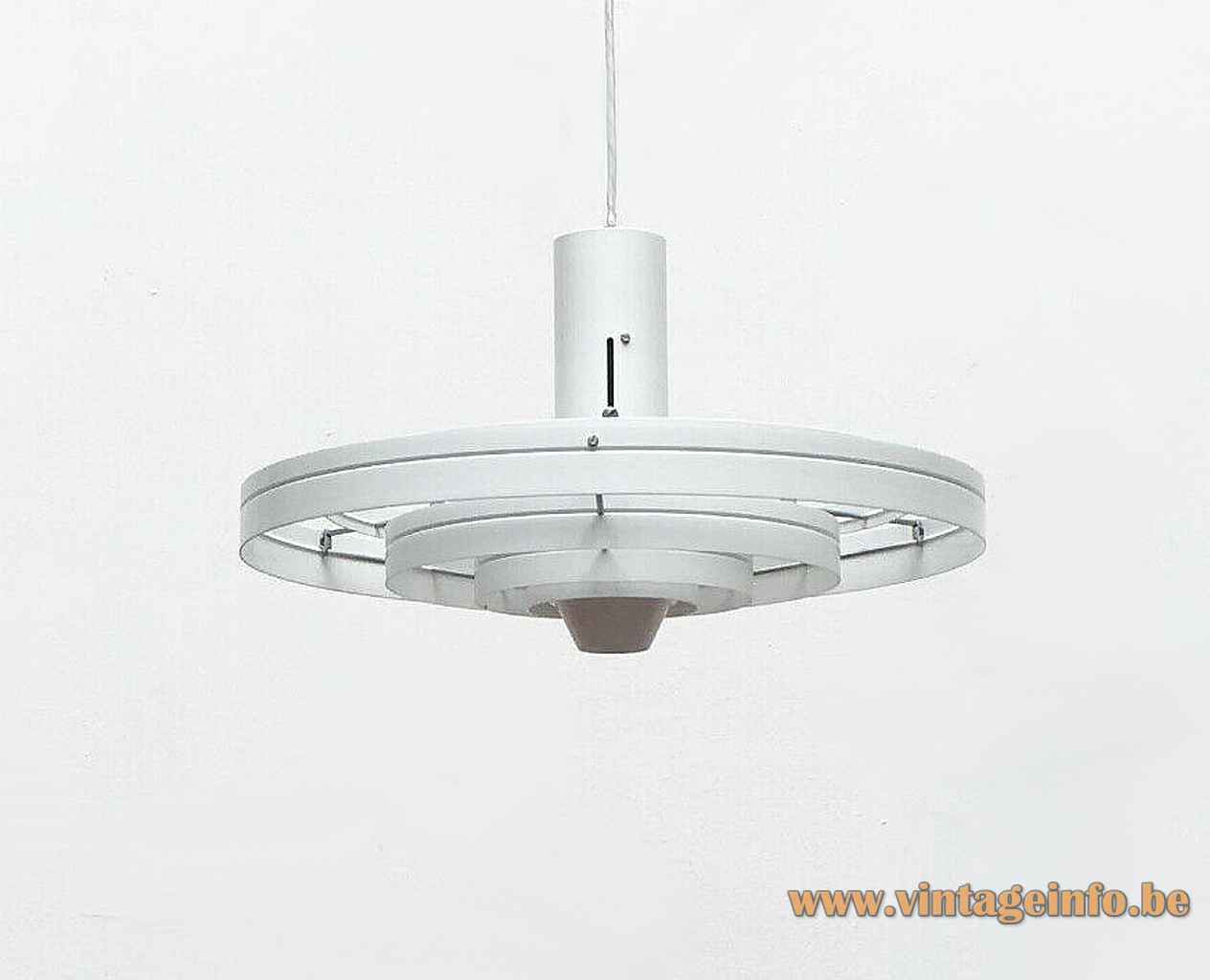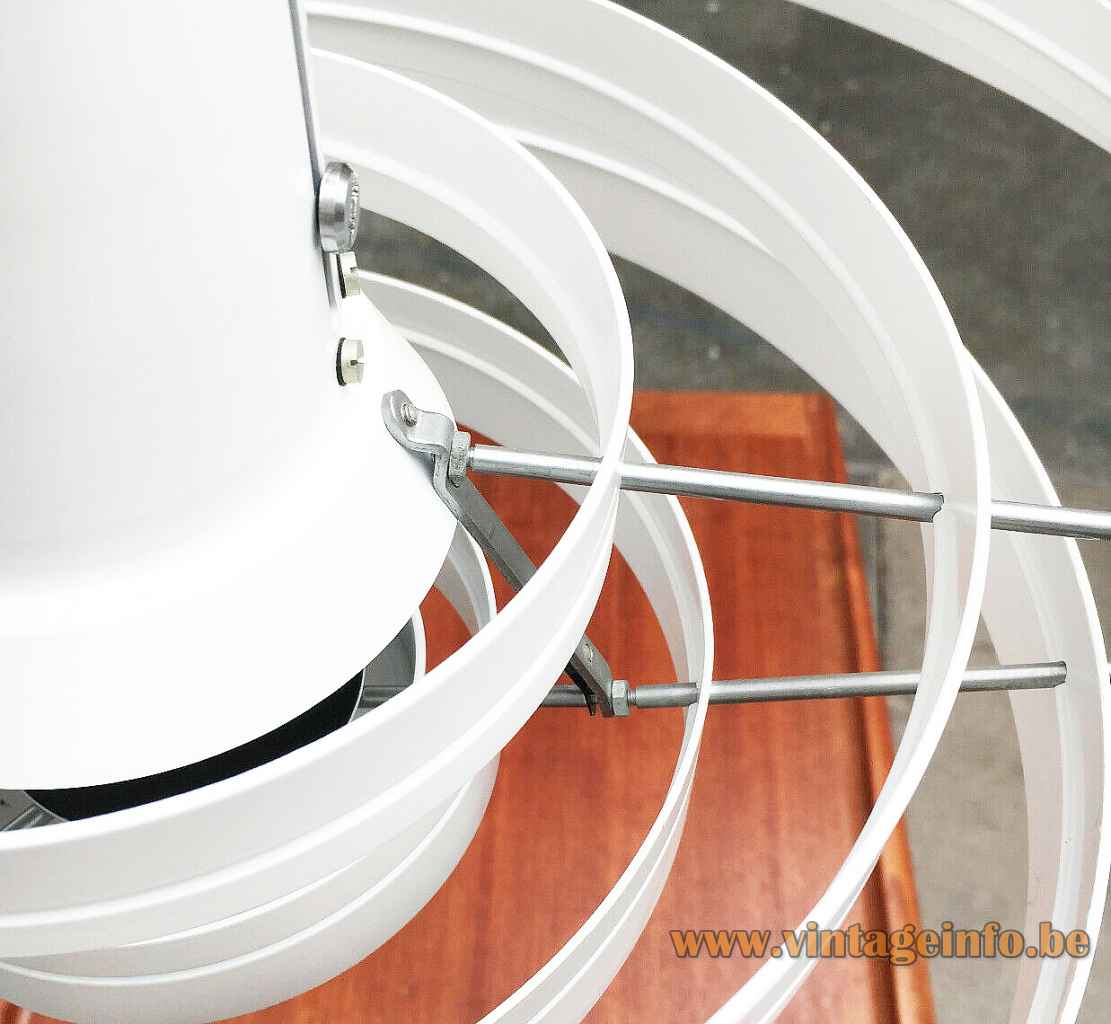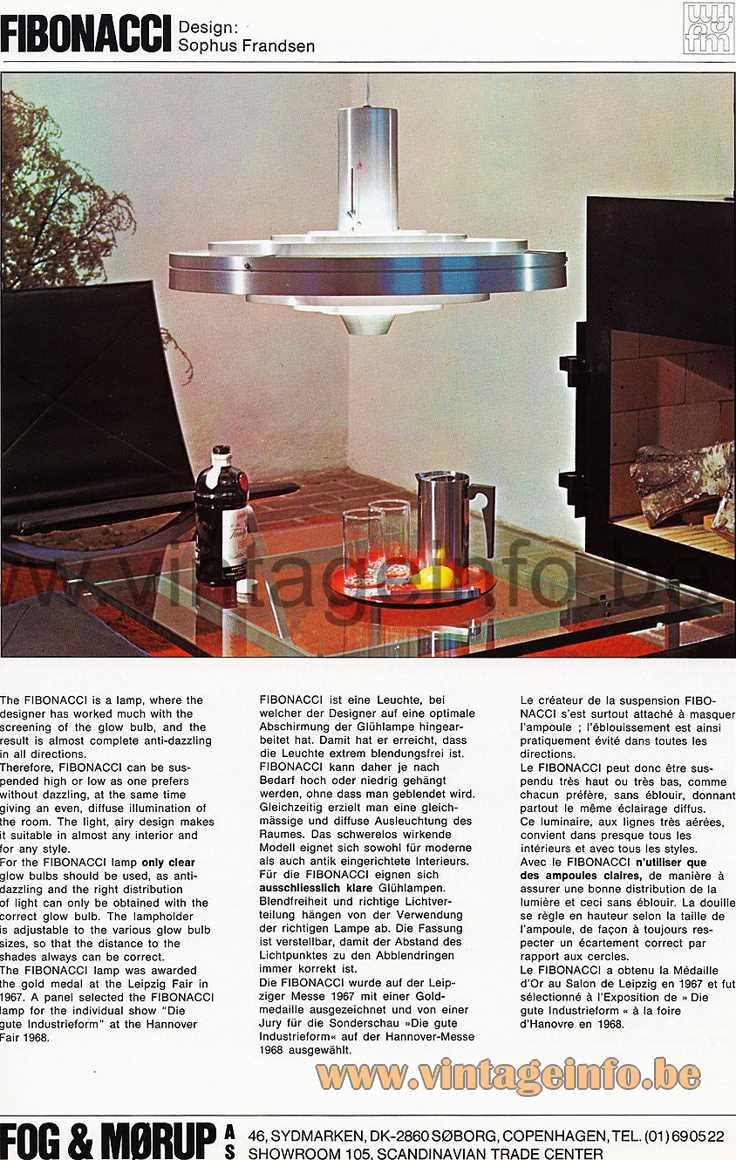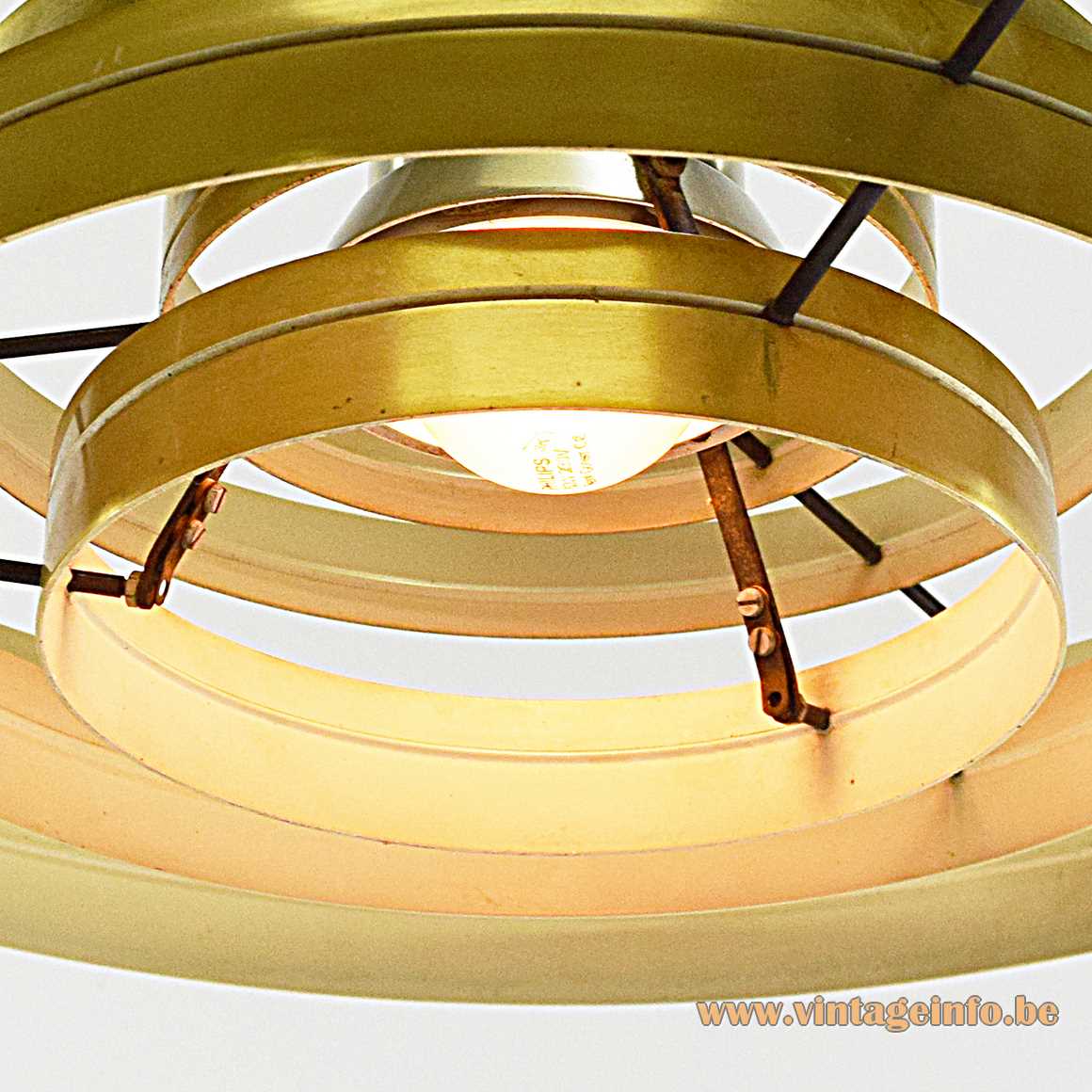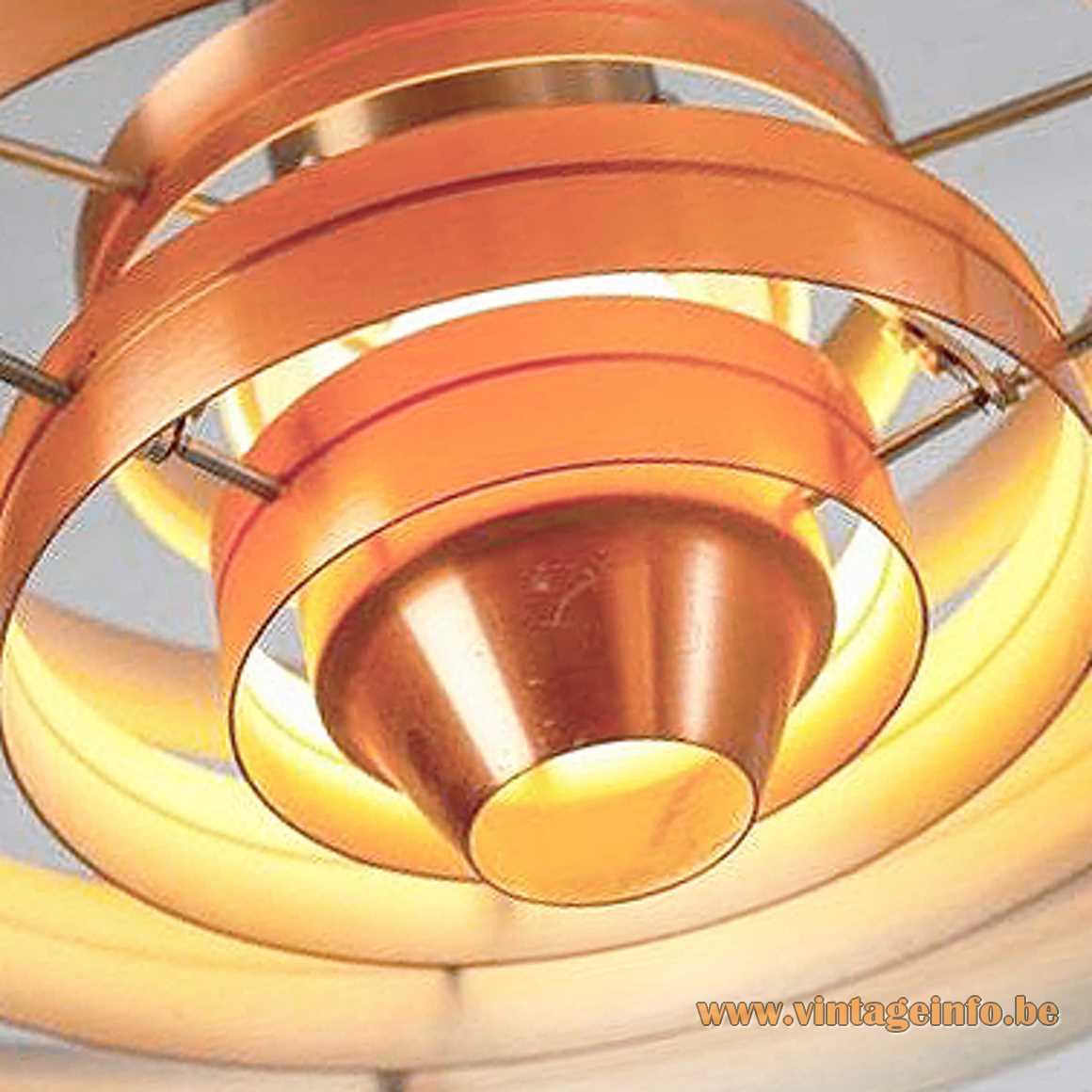Fog & Mørup Fibonacci pendant lamp – Catalogue picture
Links (external links open in a new window)
Fog & Mørup – Wikipedia (in Danish)
Royal Danish Academy of Fine Arts – Wikipedia
Lindner Licht – Thomas Hoof-Gruppe website
Lindner & Co. LJS on the Designretter website
Arne Jacobsen coffeepot – Stelton website
Vintageinfo
Fog & Mørup Fibonacci Pendant Lamp
Materials: 6 floating white painted aluminium Saturn style rings. Small black painted metal (iron) rods. Many screws. Chrome reflector. Aluminium socket holder. Cotton covered wire. Porcelain E27 socket.
Cord Length: 60 cm / 23.62”
Total Height: 27 cm / 10.62”
Height: 9 cm / 3.54”
Width: ∅ 46,6 cm / 18.34”
Electricity: 1 bulb E27, 200 watt maximum, 110/220 volt.
Any type of light bulb can be used, not a specific one preferred.
Period: 1960s, 1970s – Mid-Century Modern.
Designer: Sophus Frandsen ca. 1962.
Manufacturer: Fog & Mørup A/S, Copenhagen, Denmark.
Other versions: The Fog & Mørup Fibonacci pendant lamp exists in several colours and two sizes. The bigger version is 61 cm / 24.01” wide and uses a light bulb of maximum 300 watt.
The Fog & Mørup Fibonacci pendant lamp is often sold without the diffuser below. Maybe they were also sold without diffuser. You can find several lamps online without it. However in catalogues they always appear with the diffuser, never without. In all probability people got rid of the diffuser because when using a “normal” light bulb of 60 watt, the lamp does not provide enough light when the diffuser is attached. It is connected to the lamp with a click mechanism and can easily be removed to change the light bulb.
The light bulb can be changed in height for more direct lighting.
This Fog & Morup Fibonacci pendant lamp is equipped with a porcelain socket by Lindner with the initials LJS.
The Fibonacci pendant lamp won the gold metal at the Leipzig fair in Germany in 1967. A panel selected the Fibonacci lamp for the individual show “Die Gute Industrieform” (The good industrial design) at the Hannover fair in 1968, also in Germany. This pendant lamp stayed in production until the takeover in the early 80s by Lyskær.
It appears that the German Staff lighting company also sold this pendant lamp. Sometimes you find it with a Staff canopy.
Sophus Frandsen
Sophus Frandsen, born in 1927, was a Danish architect and professor. He graduated from the the Royal Danish Academy of Fine Arts (Det Kongelige Danske Kunstakademi) in Copenhagen in 1953. At that time he was already employed by Arne Jacobsen. In the catalogue picture a coffee pot appears that was designed by Arne Jacobsen in 1967 for Stelton, one of the first designs of the Cylinda-line range.
In 1976 he started to collaborate with fellow architect Ebbe Christensen and the two ran an architectural firm for many years.
For more than half a century Frandsen researched and taught the nature of light and its practical application at the Royal Danish Academy of Fine Arts.
Sophus Frandsen past away in 2013.
Fog & Mørup
Ansgar Fog (1880-1930) and Erik Mørup (1879-1972) started their business together in 1904 as a metalwork wholesaler. Two years later they moved to the capital Copenhagen and began to focus on lighting production and over the years taking over several electrical and lighting companies. It was only in the early 1960s that Fog & Mørup really emerged as a key force in lighting design, following the company’s appointment in 1957 of Jo Hammerborg as head of design.
Important designers and architects that worked for the company are: Claus Bonderup, Torsten Thorup, Sidse Werner. Sophus Frandsen, Jørgen Bo, E. Balslev, Peter Avondoglio,. Karen Clemmensen, Ebbe Clemmensen, Hans Due and of course Jo Hammerborg himself.
Lyfa
In the late 1970s Fog & Mørup merged with Lyfa, another leading Danish lighting producer. In 1980 Jo Hammerborg retired. A few years later Lyfa-Fog & Mørup was taken over by Lyskær. The name changed to Lyskaer-Lyfa.
Lyskaer-Lyfa produced lights until 1991, when it was incorporated into Horn Belysning A/S from Aalstrup, also in Denmark, which was itself taken over in 2005 by Nordlux from Ålborg and at a large extent dismantled.
Horn Belysning
The Horn Belysning A/S company was founded in 1952 as a family business and was first named E.S. Horn. In 1963 it changed into Horn Belysning – Horn Lighting.
The company produced lights for IKEA and several other European retail chains. They designed lights but also imported lights from China. In the 1980s Horn was the second biggest light company in Denmark.
In 2005 the name changed into Lightyears, today owned by Republic of Fritz Hansen.
Lindner & Co. LJS
The lamp socket of this Fog & Morup Fibonacci pendant lamp was made by the German Lindner company. It was founded by Kurt Lindner in 1901. He took over the management of a bankrupt factory for electrical ceramics in Jecha near Sondershausen. LJS is the abbreviation for Lindner Jecha Sondershausen.
In 1925 Lindner already had 1100 employees. Lindner acquired the company Hugo Löbl and sons in Bamberg in 1938. Jecha was located in East Germany and in 1946 the company was disassembled by the Soviet Union and became national property.
Kurt Lindner moved his company to Eggolsheim near Bamberg. In the 70s the company specialised in fuse ceramics. In 1997 Lindner merged with Gould Shawmut.
Ferraz takes over the Gould Circuit Protection Group in 1999. Lindner becomes part of the company. In 2011 the Thomas Hoof Product Company takes over the Lindner brand and continues to produce some moulds.
The most famous designer that worked for Lindner is Wilhelm Wagenfeld (1900-1990). He designed many lamps for the company. More info about Wagenfeld can be found here on Vintageinfo.
